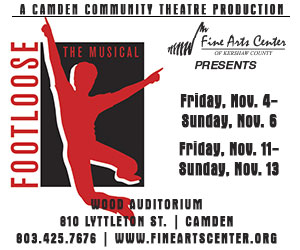For those who are fans of Phillip Glass, his newest opera Kepler provides two-hours packed with quite recognizable Glass music: swirling arpeggios, cyclically-repeated motifs, tuned percussion, passages deep in the bass, unexpected contrasts bursting though like an exploding star bursting through the dark and twinkling blanket of a night sky.
The Spoleto production of Kepler marks the American premiere of a full production of the opera, which was mounted in Europe several years ago and had a concert staging in New York. The orchestra, under the director of resident conductor John Kennedy, sounded solid in the Sottile Theatre, as did the seven soloists, and especially the 30 members of the Westminster Choir.
The subject is Johannes Kepler, a great scientist who lived from 1571 to 1630 and explored new ways of thinking about the universe and especially our place in it. He was often wrong, but opened the doors to those who came after him. His theories often bolster the idea of a geometry of God in which science and religion could peacefully co-exist. (We all know how that turned out.) He came up with ideas of how the various planets fit in relation to one another and theorized that the planets had elliptical orbits.
The opera isn’t so much about his life as his ideas, not unlike some of Glass’s early “portrait operas” such as Einstein on the Beach and Satyagraha. This may not sound like great material for opera from which we often expect love and love gone wrong, with a little murder thrown in. The life and work of Kepler may actually have made for a great and compelling opera, even without a lot of hot blood, but this version is so abstract, so lacking in action, and any sort of narrative it is both baffling and boring.
The libretto is based on Kepler’s own writings as well as those of a poet who was his contemporary. Maybe in the original German there was some grace to the words, but they mostly fall heavily to earth.
The “story,” such as it is, is nearly impossible to follow unless one has a decent knowledge of Kepler’s life and work. (The festival program book provides no program or director’s notes for the opera which would greatly help the audience and the opera.) It is a series of disjointed snippets, supposedly a look into Kepler’s mind. It is certainly the artist’s right to take this approach, but is better when it actually works.
Director Sam Helfrich does what he can moving around 40 people who don’t have that much to do, often using the choir as a university classroom full of eager 16th century students. He and set designer Andrew Lieberman have devised some beautiful and compelling scenes. The set itself is a simple one of wood and some tables and chairs with most of the changes taking place through lighting effects on a huge screen. One of the high points is what we guess is a representation of the supernova of 1604 which was viewed with awe throughout Europe, including by Kepler. The orchestra builds as the exploding star rises on screen and then suddenly drops away washing through the hall like the light. Unfortunately later in the opera most of the choir starts bleeding through their white shirts which feels like a desperate grasp at adding some excitement.
Like the one-character opera Emilie staged at the festival last year, Kepler would really be more effective staged as a concert where its ideas and music would be unencumbered by attempts at dramatic flair.
Additional performances of Kepler take place May 28, 31 and June 2.






.jpg)